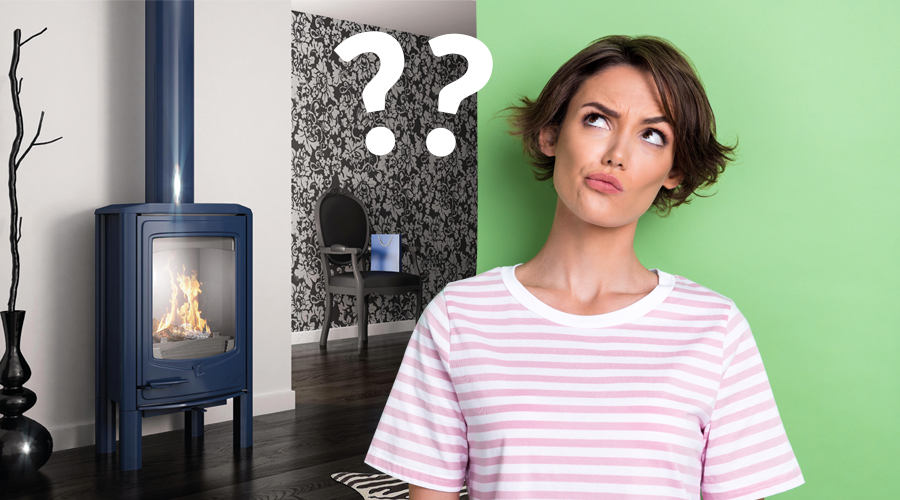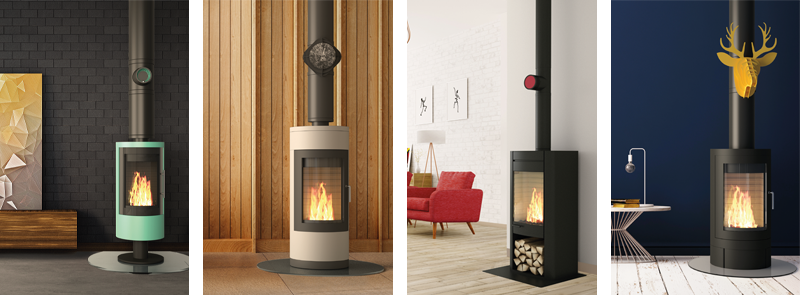Do I need to replace my existing heating appliance?
For reasons of obsolescence, energy savings, the environment, practicality or even aesthetics, you may want to part with your old heating equipment and replace it. But should it be replaced? What should you replace it with? Are there alternatives to extend the life of your heating system? Here are some possible solutions.

« I installed a log-burning stove before 2000 »
For this generation of wood-burning appliances, the question of replacement is a legitimate one. Firstly, because at this age, the appliance can show signs of fatigue. Normally, the lifespan of an appliance is around 20 years (depending on the brand, frequency of use, maintenance, etc.).
But it is above all from the point of view of performance that this is justified. These appliances are significantly less efficient than the latest generation (after 2012). In other words, with the same amount of fuel, less heat is produced. Here is the evolution of efficiency levels:

At the time of going to press, some wood-burning stoves even offer efficiencies of up to 90%! And the impact on your wallet is real. So much heat using so little fuel, it makes great economic sense!
The final advantage of the new wood-burning appliances is their much improved combustion quality, which considerably reduces emissions of pollutants into the air. Technological advances in domestic and tertiary heating appliances have cut fine particle emissions by 45% over the last 10 years.
Impact on air quality + energy savings - these are at least two good reasons to replace your old wood-burning stove. With what? The gradual disappearance of fossil fuels, wood is a renewable, low-carbon energy source that makes perfect sense for individual homes. From a price point of view, logs are also an affordable energy source. In addition, the range of wood-burning stoves on offer has grown considerably, with a wide variety of designs to suit all tastes.
If you switch to a pellet stove, you'll need to make a few changes to the flue system.
« I have an open fireplace with a masonry chimney flue »
Open fires are the least efficient wood-burning installations, with an extremely low efficiency of between 10% and 15%. In other words, the wood burns for virtually no heat output. Money down the drain, so to speak. It's a pity, because wood energy can offer so much more today:
- efficiencies of over 75%,
- lower fuel consumption for better heating quality,
- a very wide choice of attractive appliances and flues,
- greater safety for users and property.
If the economic argument hasn't convinced you, perhaps the environmental argument will. The use of open fires generates a lot of emissions. A study published by the CÉRIC in 2022 states: "Older appliances, which still represent 20% of the total number of appliances used [in France], now account for half of emissions".
This is why these "old-fashioned" heating methods are particularly targeted by prevention campaigns and incentives to replace appliances. It's not just a question of consumption, it's also a question of air quality.
There are several options in this case. An insert can be installed and the existing traditional chimney, lined with a stainless steel flue, which means that the existing flue and roof outlet can be reused without any major work (apart from installing the appliance). In this case, the flexible solution will do the lining, and KITINOX the connection.
The second option is to replace the old fireplace with a wood-burning stove. Here again, the old traditional flue must be lined with a flexible stainless steel flue to guarantee heating performance and safe operation. The appliance will then be connected using an enamelled flue.
If you choose a pellet-burning stove, you can use the same flueing process, but with the PGI System specifically designed for pellet-burning stoves.
« I have a log-burning stove from 2010 »
It all depends on the model (there are good ones and not so good ones), its performance, its condition, whether it has been installed and used according to the rules of the trade, whether it has been properly maintained, whether the installation is working as it should (good draught), and whether it still meets your needs. If you have any doubts, don't hesitate to ask your installer for advice.
Perhaps some improvements are in order?
For example, if the draught from the appliance is excessive, you can add a draught regulator to the flue pipe. This will moderate the draught for optimised combustion... and wood savings! The REGUL'ART range of regulators also includes decorative fronts to add a decorative touch to your installation.

If the style of your heating system is no longer to your taste, Cheminées Poujoulat also offers a wide range of solutions and accessories to embellish and personalise your installation: DESIGN'UP deco ventilated surrounds, wall finishing plates, coloured flues and painted collars, adjustable DÉCO'START... You're spoilt for choice!










